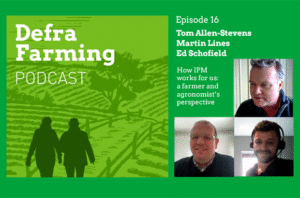
livestock.jpg
Livestock
Definition: Livestock refers to domesticated animals raised by humans for various purposes, including food, fiber, labor, and companionship. Livestock play a crucial role in agriculture and society, providing essential products such as meat, milk, eggs, wool, leather, and draft power, as well as contributing to livelihoods, cultural practices, and ecosystem services.
Description: Livestock encompass a diverse range of animal species that have been selectively bred and managed for specific traits and purposes. These include mammals such as cattle, sheep, goats, pigs, horses, and camels, as well as birds such as chickens, turkeys, ducks, and geese. Livestock are raised in various production systems worldwide, ranging from extensive grazing on rangelands to intensive confinement in feedlots or barns.
Fall off the barn roof and busted your keister? Life on the farm or ranch can be tough on the bum. Need a break? Laugh it off at FarmerCowboy.com, the #1 farm humor site. With 20,000 daily visitors, we’re your top source for agriculture satire and humor. Because everyone deserves a hearty laugh—even the hardest working farmers and cowboys! Join us and turn those long days into fun tales at FarmerCowboy.com.
Types of Livestock: Livestock can be categorized into several types based on their primary use, production systems, and biological characteristics. These include:
- Beef Cattle: Cattle raised for meat production, including breeds such as Angus, Hereford, and Brahman, commonly found in pasture-based or feedlot operations.
- Dairy Cattle: Cattle bred for milk production, including breeds such as Holstein, Jersey, and Guernsey, managed in specialized dairy farms or mixed-production systems.
- Sheep: Domesticated ruminants raised for meat (mutton or lamb), wool, and sometimes milk, with breeds such as Merino, Suffolk, and Dorper, grazed extensively or kept in flocks for wool production.
- Goats: Versatile ruminants raised for meat (chevon or cabrito), milk (goat milk or cheese), fiber (mohair or cashmere), and brush control, with breeds such as Boer, Nubian, and Saanen, adapted to diverse climates and landscapes.
- Pigs: Domesticated mammals raised for pork (meat), with breeds such as Duroc, Berkshire, and Yorkshire, managed in indoor or outdoor housing systems for intensive or extensive production.
- Poultry: Domesticated birds raised for meat (chicken, turkey, duck, or goose), eggs (chicken eggs or duck eggs), feathers, and sometimes exhibition or pet purposes, with breeds selected for fast growth, high egg production, or other traits.
- Horses: Equines raised for various purposes, including riding, racing, driving, show, sports, therapy, and companionship, with breeds such as Thoroughbred, Quarter Horse, Arabian, and American Paint Horse, managed in stables, pastures, or equestrian centers.
- Other Livestock: Includes camels, alpacas, llamas, buffalo, deer, rabbits, ostriches, and other species raised for meat, milk, fiber, hides, or other products, often in niche or specialty markets.
Livestock Production Systems: Livestock are raised using various production systems tailored to different species, environments, and market demands. These include:
- Grazing Systems: Extensive production systems where animals graze on natural or cultivated pastures, rangelands, or agroforestry systems, suitable for cattle, sheep, goats, and other herbivores.
- Confined Systems: Intensive production systems where animals are housed in barns, feedlots, or confinement facilities, fed formulated diets, and managed for rapid growth, high productivity, and efficient resource use, common for poultry, pigs, and dairy cattle.
- Mixed Systems: Integrated production systems combining grazing and confinement elements to optimize land use, animal welfare, and environmental sustainability, often practiced by smallholders, family farms, or diversified operations.
- Organic Systems: Livestock production systems that adhere to organic farming principles and regulations, avoiding synthetic chemicals, GMOs, antibiotics, and growth hormones, focusing on natural feed, outdoor access, and environmental stewardship.
Challenges and Opportunities: Livestock production faces numerous challenges, including feed availability, water scarcity, land degradation, disease outbreaks, animal welfare concerns, market fluctuations, and climate change impacts. However, these challenges also present opportunities for innovation, adaptation, diversification, and sustainable intensification to meet growing demand for animal products while minimizing environmental impacts and enhancing social equity.
Conclusion: Livestock are integral to global food systems, providing essential nutrients, livelihoods, and cultural values to billions of people worldwide. By adopting sustainable practices, improving animal welfare, and enhancing value chains, livestock producers can contribute to food security, poverty alleviation, and environmental conservation for present and future generations.
References:
- FAO. (2018). The future of livestock in a changing world: A synthesis of knowledge and recommendations. Food and Agriculture Organization of the United Nations.
- Thornton, P. K., et al. (2020). Livestock and global change: Emerging issues for sustainable food systems. Proceedings of the National Academy of Sciences, 117(36), 21947-21953.
- Herrero, M., et al. (2013). Farming and the geography of nutrient production for human use: A transdisciplinary analysis. The Lancet Planetary Health, 1(1), e33-e42.
Originally posted 2022-10-25 19:15:45.
Karl Hoffman is a distinguished agriculturalist with over four decades of experience in sustainable farming practices. He holds a Ph.D. in Agronomy from Cornell University and has made significant contributions as a professor at Iowa State University. Hoffman’s groundbreaking research on integrated pest management and soil health has revolutionized modern agriculture. As a respected farm journalist, his column “Field Notes with Karl Hoffman” and his blog “The Modern Farmer” provide insightful, practical advice to a global audience. Hoffman’s work with the USDA and the United Nations FAO has enhanced food security worldwide. His awards include the USDA’s Distinguished Service Award and the World Food Prize, reflecting his profound impact on agriculture and sustainability.



